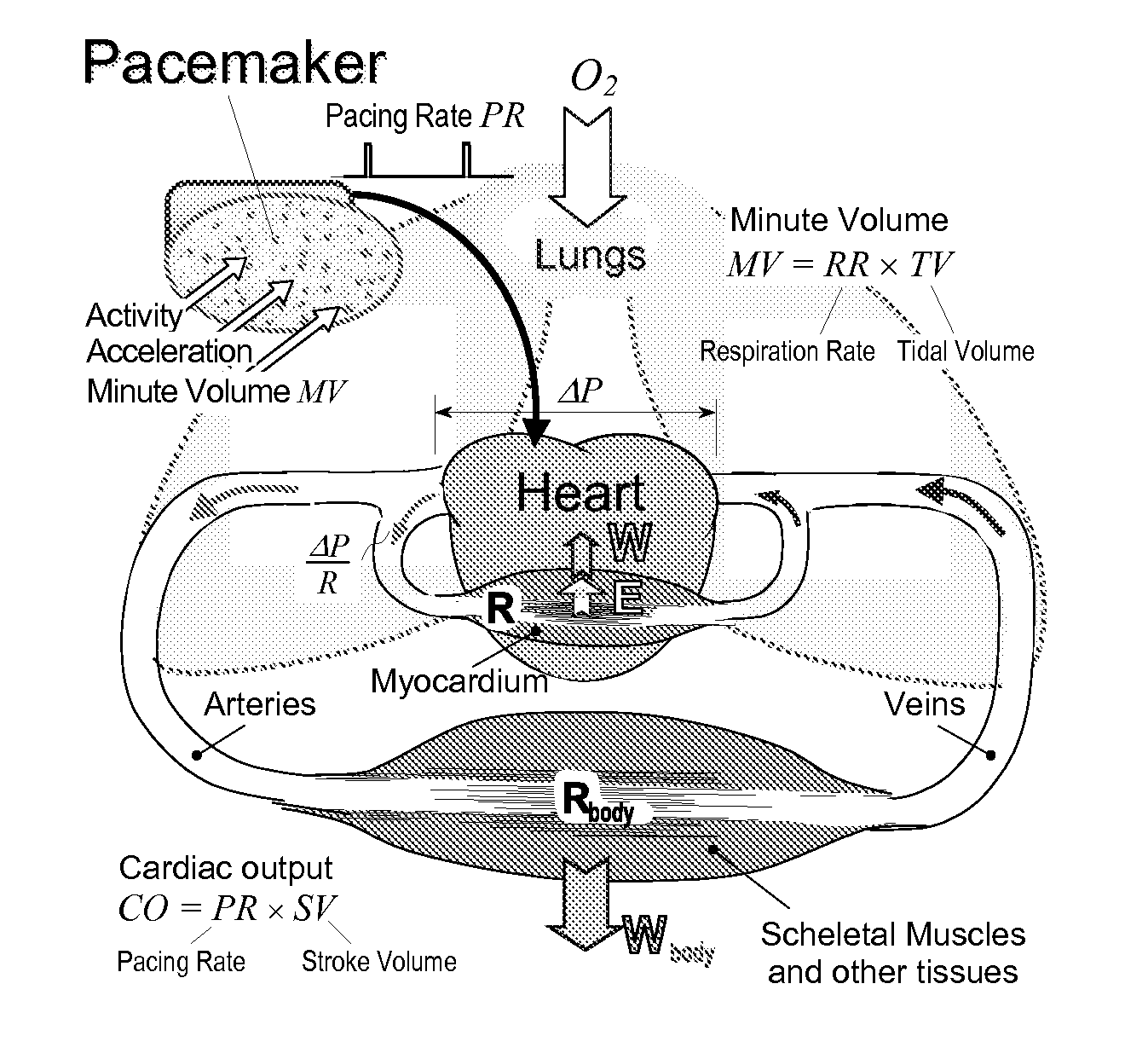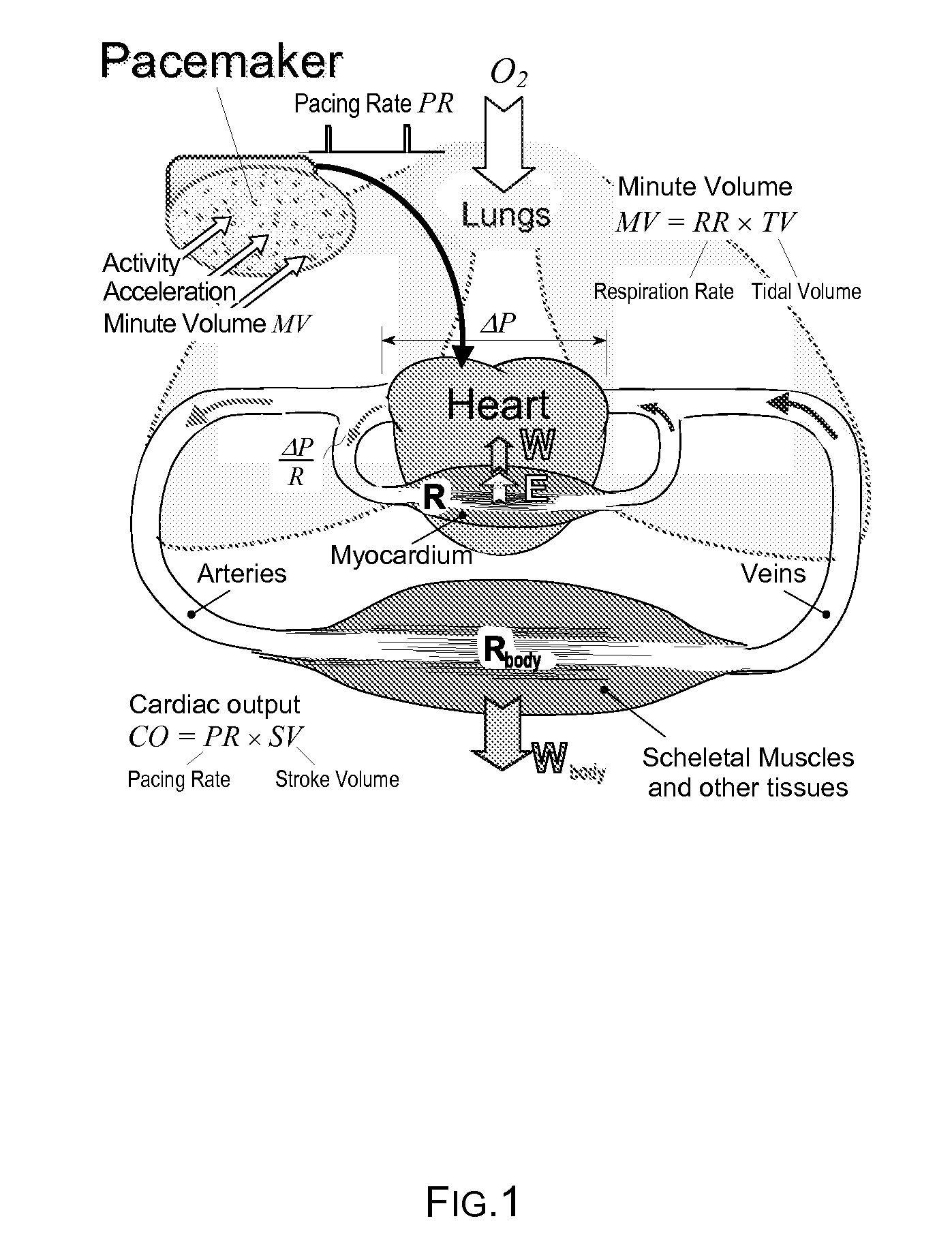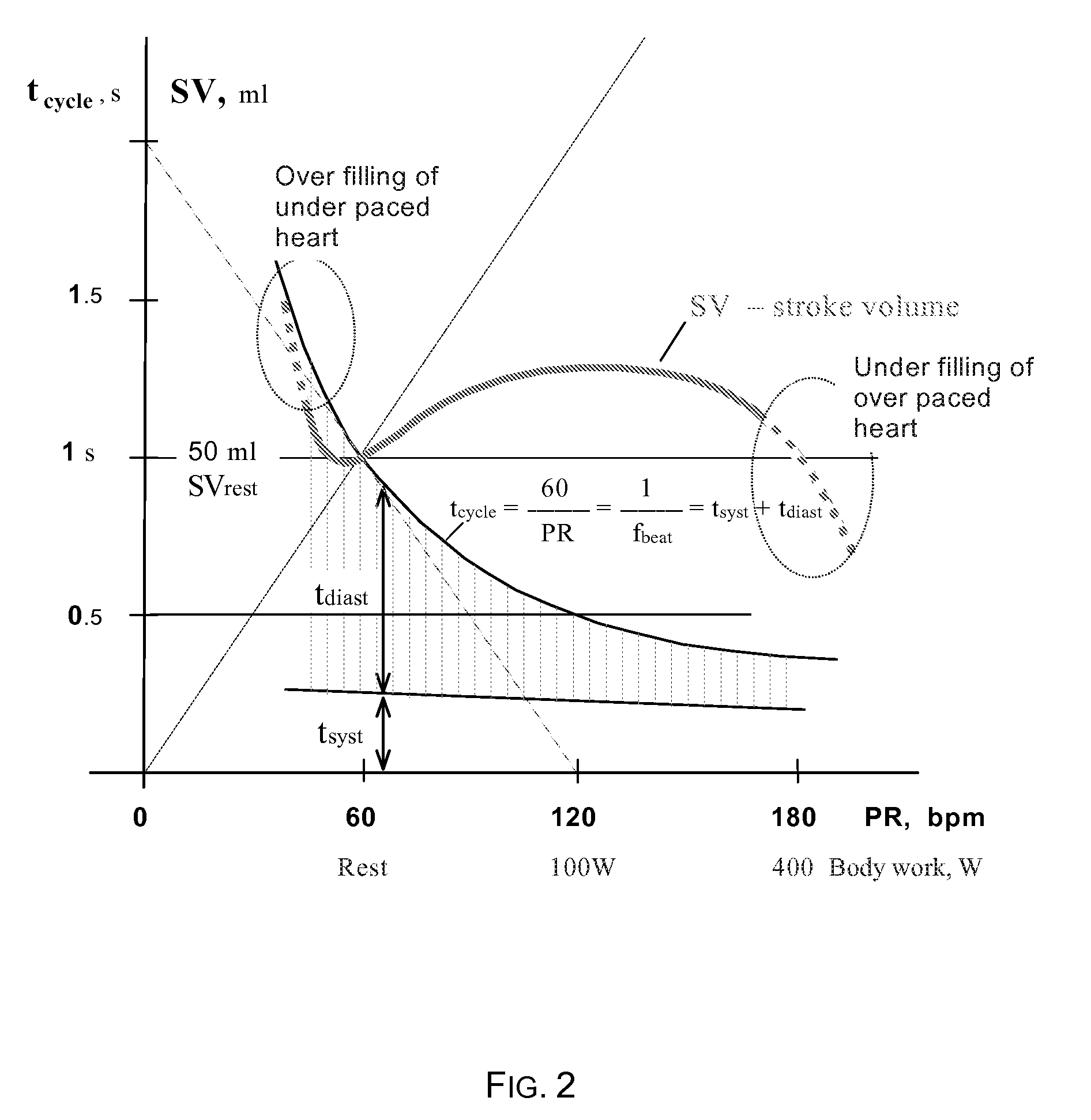Device and Method for Monitoring Cardiac Pacing Rate
a technology of cardiac pacing and monitoring device, which is applied in the field of cardiac pacing rate monitoring device, can solve the problems of fibrosis and heart failure, affecting the quality of life of patients, and affecting the quality of life of patients, and incorrect rate limits or rate response can have serious effects
- Summary
- Abstract
- Description
- Claims
- Application Information
AI Technical Summary
Benefits of technology
Problems solved by technology
Method used
Image
Examples
Embodiment Construction
[0026]FIG. 1 depicts an implanted cardiac pacemaker with adaptive pacing rate control, and a simplified presentation of the cardiovascular system. The pacing rate must be adaptive to the patient's workload to ensure the required cardiac output CO, which is a product of stroke volume SV and heart rate HR. Several kind of body sensors monitor the level of physical work Wbody, e.g., activity and acceleration sensors, and a sensor of minute volume MV of respiration. The most adequate means for estimating the workload is measurement of variations of the electrical bioimpedance of lungs. In simple cases the pacing rate (PR) follows almost linearly the minute volume (MV) of respiration, which can be obtained directly from the measured lung impedance. However, in more complicated cases the pacing rate PR has a badly defined nonlinear dependence from the respiration rate (RR) and the tidal volume (TV). The unhealthy heart can not operate at both, significantly high and low rates because of r...
PUM
 Login to View More
Login to View More Abstract
Description
Claims
Application Information
 Login to View More
Login to View More - R&D
- Intellectual Property
- Life Sciences
- Materials
- Tech Scout
- Unparalleled Data Quality
- Higher Quality Content
- 60% Fewer Hallucinations
Browse by: Latest US Patents, China's latest patents, Technical Efficacy Thesaurus, Application Domain, Technology Topic, Popular Technical Reports.
© 2025 PatSnap. All rights reserved.Legal|Privacy policy|Modern Slavery Act Transparency Statement|Sitemap|About US| Contact US: help@patsnap.com



